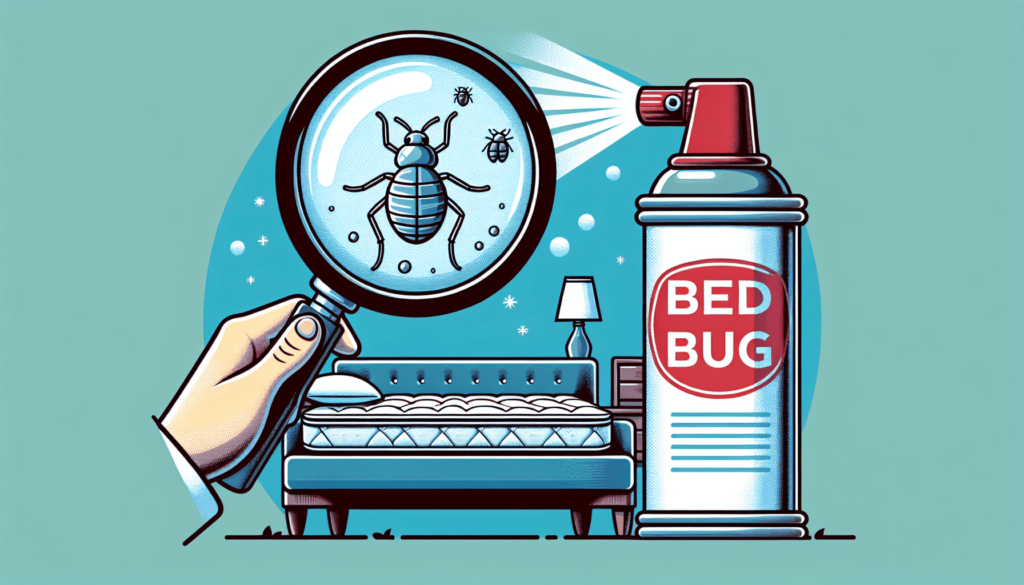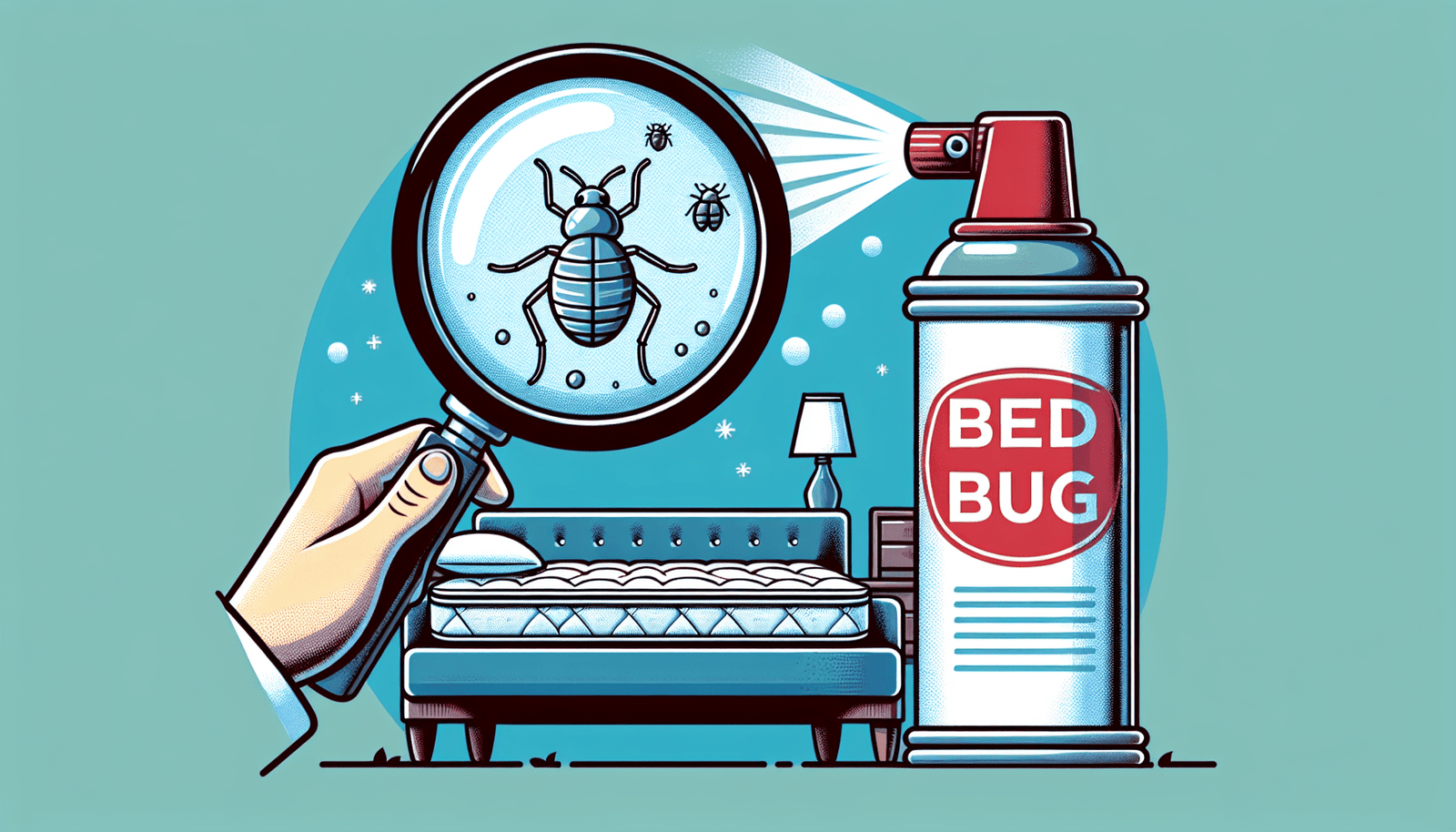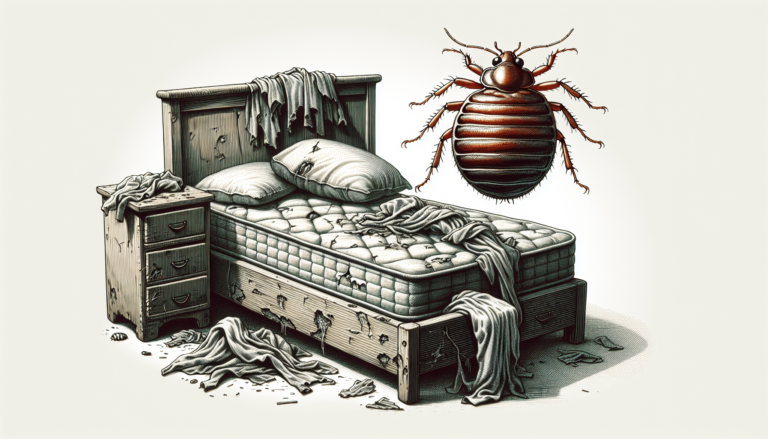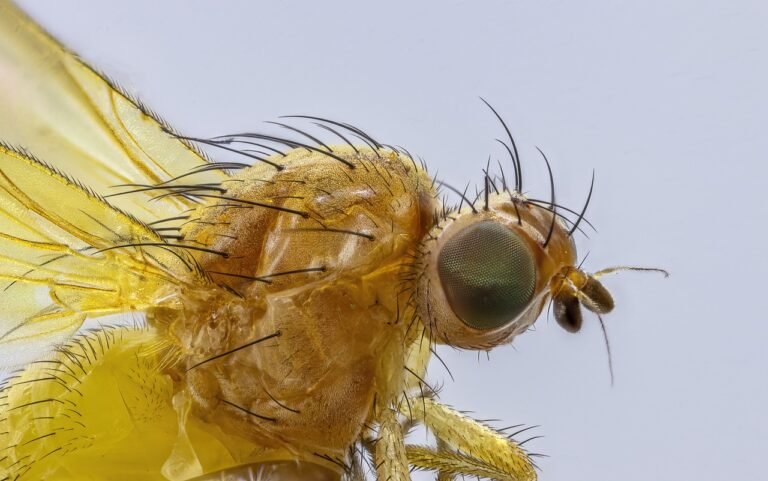What to Do If You Have Bed Bugs
If you’re dealing with the unsettling problem of bed bugs, it’s crucial to act quickly and effectively. These tiny pests can cause not only physical discomfort but also significant psychological distress. In this article, we will provide you with comprehensive guidance and strategies to help you combat bed bugs and regain control of your living space. From identifying the signs of an infestation to implementing proven extermination methods, we will equip you with the knowledge and insights you need to eliminate these unwelcome intruders. So, if you’re ready to take action and restore peace to your home, keep reading.
Identifying Bed Bugs
Recognizing physical characteristics of bed bugs
When it comes to identifying bed bugs, it’s important to have a clear understanding of their physical characteristics. Bed bugs are small, flat, and oval-shaped insects that are typically brown or reddish-brown in color. Adult bed bugs can range in size from 4 to 5 millimeters in length, while nymphs (immature bed bugs) can be as small as 1.5 millimeters. Bed bugs have six legs, antennae, and are wingless.
Spotting signs of bed bug infestation
Apart from actually seeing the bed bugs, there are several signs that can indicate a bed bug infestation. One of the most common signs is the presence of small, rust-colored stains on bedding or furniture. These stains are the result of bed bug fecal matter that contains blood. Another sign is the appearance of small, itchy red bumps on your skin, caused by bed bug bites. Additionally, you may notice a sweet, musty odor in the affected area, as well as the presence of shed bed bug skins or eggshells.
Understanding bed bug behavior
Having a basic understanding of bed bug behavior can also help in identifying an infestation. Bed bugs are nocturnal creatures, which means they are most active at night when their hosts (humans) are asleep. They are attracted to the warmth and carbon dioxide that our bodies emit, allowing them to locate their food source. Bed bugs are excellent hitchhikers and can easily be transported from one place to another through luggage, clothing, or furniture. They can hide in cracks and crevices, making it difficult to detect and eliminate them.
Implications of a Bed Bug Infestation
Health risks associated with bed bugs
While bed bugs are not known to transmit diseases, their presence can still have negative health effects. Bed bug bites can cause itching, redness, and swelling, which can lead to secondary infections if scratched excessively. Some individuals may also have allergic reactions to bed bug bites, experiencing more severe symptoms. Additionally, the stress and anxiety caused by a bed bug infestation can have a negative impact on mental well-being.
Impact on mental well-being
Dealing with a bed bug infestation can take a toll on one’s mental health. The fear and anxiety of being bitten can cause sleep disturbances and heightened stress levels. The constant worry about the infestation spreading or returning can lead to feelings of helplessness and frustration. Mental health issues such as insomnia, depression, and anxiety disorders may arise as a result of a bed bug infestation.
Damage to property
In addition to the health implications, bed bugs can also cause damage to property. They can stain and ruin mattresses, furniture, and other fabrics with their fecal matter and bloodstains. If left untreated, a severe infestation can lead to costly replacements and repairs. It is crucial to take immediate action upon discovering bed bugs to minimize the potential damage to your property.

First Steps to Take When You Discover Bed Bugs
Collect and identify a sample bug
When you suspect a bed bug infestation, it’s essential to collect and identify a sample bug. This can be done by carefully capturing one of the insects in question using tweezers or a sealed container. Place the bug in a sealed bag or jar to prevent it from escaping. You can then take the sample to a professional pest control service or an entomologist for proper identification. Knowing for sure that you are dealing with bed bugs will help determine the most effective treatment methods.
Contact a professional pest control service
Upon discovering bed bugs, it is highly recommended to contact a professional pest control service. Bed bugs are notoriously difficult to eliminate due to their hiding and reproductive capabilities. Pest control professionals have the expertise and tools to effectively exterminate bed bugs and prevent their return. They will assess the extent of the infestation, develop a tailored treatment plan, and provide guidance on how to prepare your home for treatment.
Inform property management if living in a rented space
If you are living in a rented space, it is crucial to inform your property management or landlord about the bed bug infestation. They may have specific protocols in place for dealing with pest problems and can assist in coordinating with a pest control company. Promptly notifying the property management will not only protect your rights as a tenant but also prevent the infestation from spreading to neighboring units.
Bed Bug Infestation Myth Busting
Common misconceptions about bed bugs
There are numerous misconceptions surrounding bed bugs, which can hinder effective control and treatment. One common myth is that bed bugs are only found in dirty or unclean environments. In reality, bed bugs can infest any space, regardless of cleanliness. Another misconception is that bed bugs are too small to be seen with the naked eye. While they can be challenging to spot due to their size and hiding behavior, they are visible to the human eye.
Factors that do not attract bed bugs
Contrary to popular belief, bed bugs are not attracted to dirt, clutter, or poor personal hygiene. They are attracted to warmth, carbon dioxide, and the presence of a blood meal. Cleanliness or the lack thereof does not determine the likelihood of a bed bug infestation. It is important to debunk these myths to avoid stigmatizing individuals or households dealing with bed bugs and to focus on effective prevention and control measures.
Facts about bed bug reproduction and lifespan
To effectively combat a bed bug infestation, it is essential to understand their reproduction and lifespan. Female bed bugs can lay up to 500 eggs in their lifetime, which typically lasts around 6 to 12 months. The eggs are tiny, whitish, and barely visible to the naked eye. They hatch into nymphs, which require regular blood meals to molt and grow into adulthood. Bed bugs undergo five nymph stages before reaching adulthood, and each stage requires a blood meal. With the right conditions, bed bugs can reproduce quickly, leading to a rapid increase in infestation size if left unchecked.

DIY Bed Bug Control Methods
Using bed bug sprays and powders
There are various bed bug sprays and powders available on the market that claim to eliminate bed bugs. These products typically contain insecticides that target bed bugs and their eggs. However, it is important to note that DIY sprays and powders may not be as effective as professional treatments. Bed bugs have developed resistance to certain insecticides, and without proper knowledge and expertise, it can be challenging to fully eradicate an infestation.
Heat treatment and cold treatment
Heat treatment and cold treatment are two additional methods that can be used to control bed bugs. Heat treatment involves raising the temperature in the affected area to a level that is lethal to bed bugs and their eggs. This can be achieved through the use of specialized heating equipment. Cold treatment, on the other hand, involves exposing the infested items to extremely low temperatures to kill the bed bugs. Both heat and cold treatments should be carried out with caution and may require professional assistance to ensure effectiveness.
Vacuuming and cleaning
Regular vacuuming and cleaning can help to manage a mild bed bug infestation. Vacuuming can physically remove bed bugs, eggs, and bed bug debris from carpets, furniture, and other surfaces. Be sure to use a vacuum with a HEPA filter to prevent the bed bugs from escaping and spreading further. After vacuuming, it is important to empty the vacuum bag or canister into a sealed bag and dispose of it immediately. Additionally, washing infested bedding, clothing, and linens in hot water and drying them on high heat can help kill any bed bugs present.
Preparing For Professional Pest Control
How to prepare your home for treatment
Before the arrival of a professional pest control service, there are certain steps you should take to prepare your home for treatment. This includes decluttering the affected areas to allow for easier access and inspection. Remove any unnecessary items such as clothing, bedding, or furniture that may impede the treatment process. Seal any cracks or crevices in the walls or furniture to prevent bed bugs from hiding or escaping during treatment. It is also important to inform the pest control professionals about any pets or sensitive individuals in the household to ensure appropriate measures are taken.
What to expect during professional bed bug control
When a professional pest control service arrives for bed bug control, they will conduct a thorough inspection of the premises to determine the extent of the infestation. They will identify potential hiding spots, breeding areas, and entry points. Based on their assessment, they will recommend the most suitable treatment plan, which may involve a combination of chemical treatments, heat treatments, or other methods. The treatment process can vary in duration depending on the severity of the infestation.
Safety measures during pest control treatment
During a professional bed bug control treatment, it is important to follow any safety measures or instructions provided by the pest control professionals. This may include temporarily vacating the premises or staying in a designated area while the treatment is being conducted. It is important to adhere to these safety measures to protect yourself and others from potential exposure to chemicals or treatments. After the treatment, ensure that any residual chemicals or residues are adequately ventilated or cleaned up as per the instructions provided.
Preventing Future Bed Bug Infestations
Keeping your home clean and clutter-free
One of the key steps in preventing future bed bug infestations is to keep your home clean and clutter-free. Regularly vacuuming and cleaning your living space can help detect any potential bed bugs before they become a full-blown infestation. Eliminate or reduce clutter, as this provides fewer hiding spots for bed bugs. By maintaining a clean and organized home, you can proactively address any signs of bed bugs early on and prevent them from spreading.
Regularly inspecting sleeping and lounging areas
Routine inspections of your sleeping and lounging areas are crucial in preventing bed bug infestations. Check your mattress, box spring, and bedding for any signs of bed bugs, such as blood stains, shed skins, or fecal matter. It is also important to inspect upholstered furniture, curtains, and cracks and crevices in walls or floorboards. Early detection and prompt action can help prevent a small bed bug problem from escalating into a larger infestation.
Using bed bug proof mattress covers
Investing in bed bug proof mattress covers can provide an extra layer of protection against bed bugs. These specialized covers are designed to encase your mattress, box spring, and pillows, preventing bed bugs from infesting or escaping from these areas. Be sure to choose covers that are specifically labeled as bed bug proof and certified by reputable sources. Regularly clean and inspect the covers to ensure their effectiveness. Remember, bed bug proof mattress covers should complement other preventive measures and not be relied upon as the sole method of prevention.
Understanding the Financial Aspects of Bed Bug Control
Costs associated with professional pest control
The costs associated with professional bed bug control can vary depending on several factors, including the size of the infestation, the extent of the treatment required, and the location of the property. Generally, professional bed bug treatments can range from a few hundred to a few thousand dollars. It is important to obtain multiple quotes from reputable pest control companies and fully understand the scope of the services offered. While it may be tempting to opt for less expensive DIY methods, investing in professional bed bug control can save you time, money, and potential reinfestation in the long run.
Potential for property damage repairs
Bed bug infestations can lead to potential property damage, particularly if left untreated or if DIY methods are ineffective. Replacement or repair of damaged furniture, mattresses, or other belongings can incur additional costs. Furthermore, the costs associated with extensive cleaning and sanitization of the affected areas after treatment should also be taken into account. Timely and effective bed bug control can minimize the potential for property damage and help maintain the value of your assets.
Valuing the worth of peace of mind
While it can be challenging to put a specific price on peace of mind, it is invaluable when it comes to dealing with a bed bug infestation. The ability to sleep comfortably and without the worry of bed bug bites is essential for your overall well-being. Investing in professional bed bug control not only eliminates the immediate problem but also provides long-term peace of mind. The cost of peace of mind in the form of a bed bug-free home is priceless.
Post-Treatment Guidelines
Post-treatment cleanup
After undergoing professional bed bug control treatment, it is important to follow post-treatment cleanup guidelines. This may include thoroughly cleaning and vacuuming the treated areas to remove any residual bed bug debris. Dispose of the vacuum bag or empty the canister in a sealed bag and discard it immediately. Launder all bedding, curtains, and clothing as per the instructions provided by the pest control professionals. By diligently following the post-treatment cleanup guidelines, you can help prevent the reoccurrence of bed bugs.
Monitoring for recurring bed bug presence
Even after professional treatment, it is important to monitor for any signs of recurring bed bug presence. Keep an eye out for any new bites or evidence of bed bugs, such as fecal stains or shed skins. Regularly inspect sleeping and lounging areas, as well as other common hiding spots for bed bugs. Early detection and swift action can help prevent a small number of remaining bed bugs from multiplying and causing a full-blown infestation.
Maintenance and repeat treatments if necessary
In some cases, repeat treatments may be necessary to fully eradicate a bed bug infestation. This can be due to the presence of surviving bed bugs or eggs that were not affected by the initial treatment. It is important to work closely with the pest control professionals to determine the appropriate course of action. Additionally, implementing preventive measures such as regular cleaning, inspections, and the use of bed bug-proof mattress covers can help maintain a bed bug-free environment.
Additional Resources on Bed Bugs
Leading or trusted sources for more information on bed bugs
For more information on bed bugs, there are several leading and trusted sources that can provide comprehensive and reliable information. The Centers for Disease Control and Prevention (CDC) offers a wealth of information on bed bug prevention, identification, and control. The National Pest Management Association (NPMA) is another reputable source that provides educational resources on bed bugs and pest control. Additionally, academic institutions such as universities may have entomology departments that publish research and information on bed bugs.
Professional pest control associations
Professional pest control associations can also serve as valuable resources for information on bed bugs. These associations often have resources, guidelines, and directories of certified pest control professionals. Examples of such associations include the National Pest Management Association (NPMA) and the Entomological Society of America (ESA). Consulting these associations can help you find reputable pest control professionals in your area who specialize in bed bug control.
Relevant government health departments and infographics on bed bugs
Government health departments are another trustworthy source of information on bed bugs. They often have dedicated web pages or brochures that provide guidance on bed bug identification and control. The websites of departments such as the U.S. Environmental Protection Agency (EPA) or local health departments can provide valuable insights. In addition, infographics on bed bugs can convey important information in a visually appealing and easy-to-understand format. Many reputable sources, including government agencies and pest control associations, offer infographics on bed bugs that can be shared for educational purposes.
In conclusion, discovering a bed bug infestation can be a stressful and frustrating experience. However, by understanding the physical characteristics and behavior of bed bugs, recognizing the implications of an infestation, and knowing the appropriate steps to take, you can effectively address the problem. Whether through DIY methods or professional pest control, it is important to be proactive in preventing and controlling bed bugs. By following the guidelines provided and utilizing the available resources, you can regain peace of mind and create a bed bug-free environment.
This article is for informational purposes only and should not be considered as professional advice. Consult a pest control professional for specific recommendations regarding your situation.
Wikipedia link: Bed Bug

Now let’s test what you’ve learned!
Quiz:
- What are some physical characteristics of bed bugs?
- What are some signs of a bed bug infestation?
- Why is it important to collect and identify a sample bug?
- What should you do if you discover bed bugs in a rented space?
- How can you prevent future bed bug infestations?
Remember, knowledge is key in effectively dealing with a bed bug infestation. Good luck!






